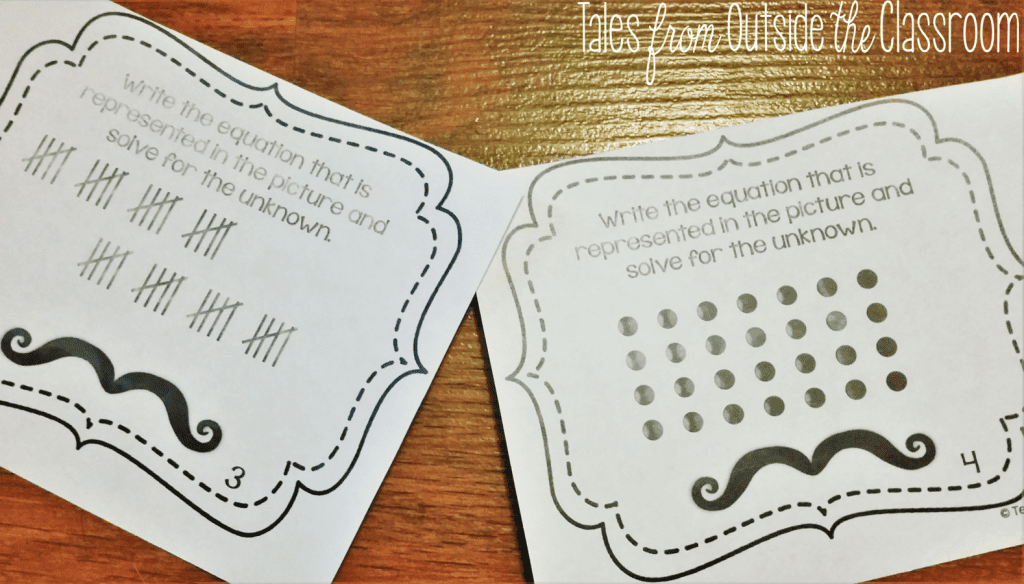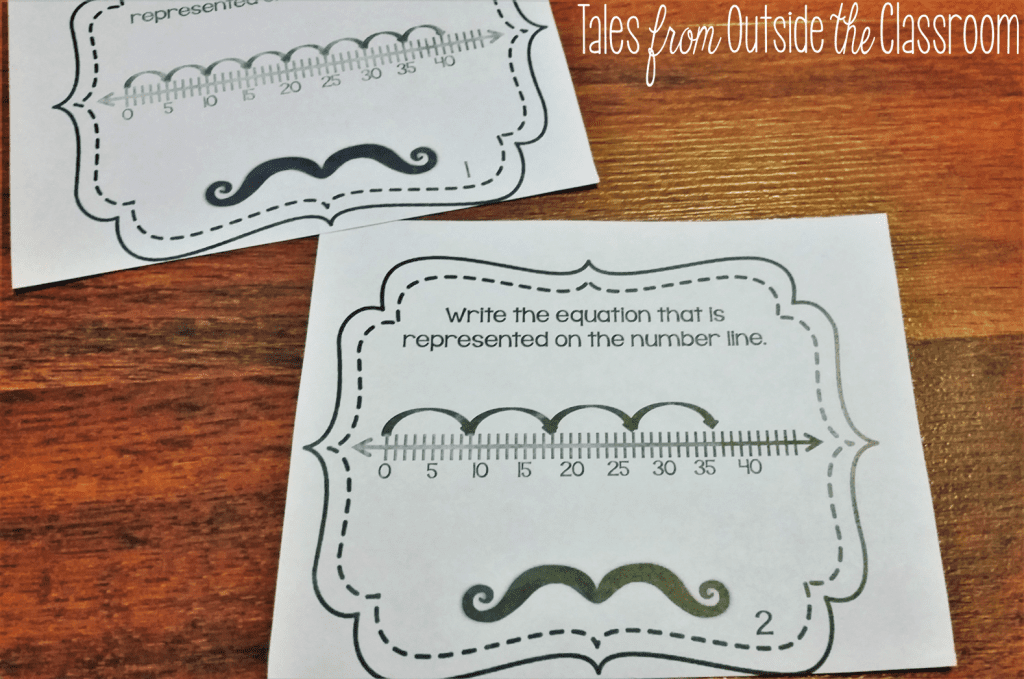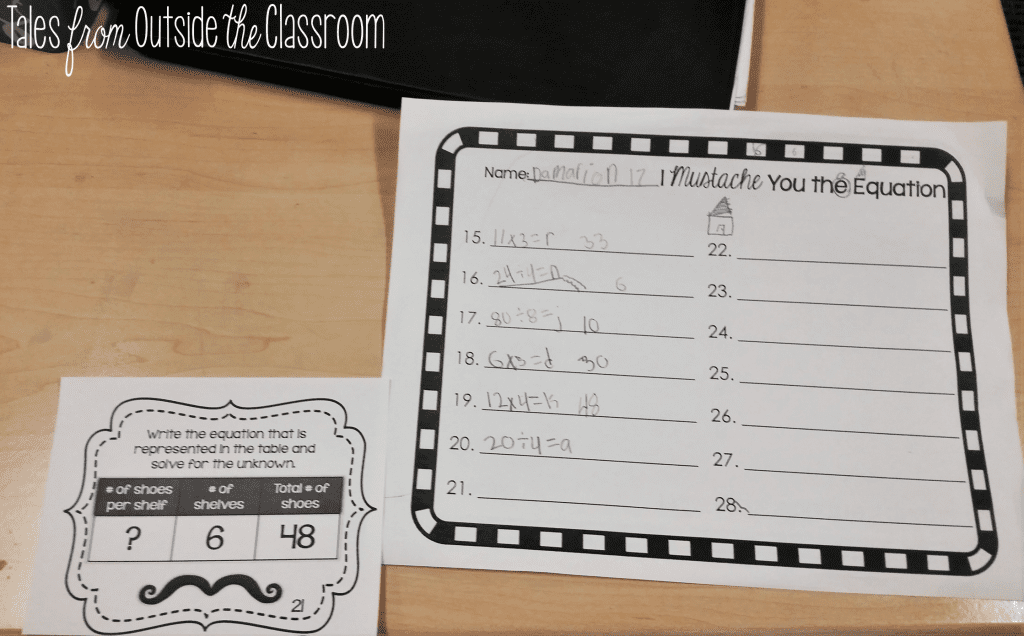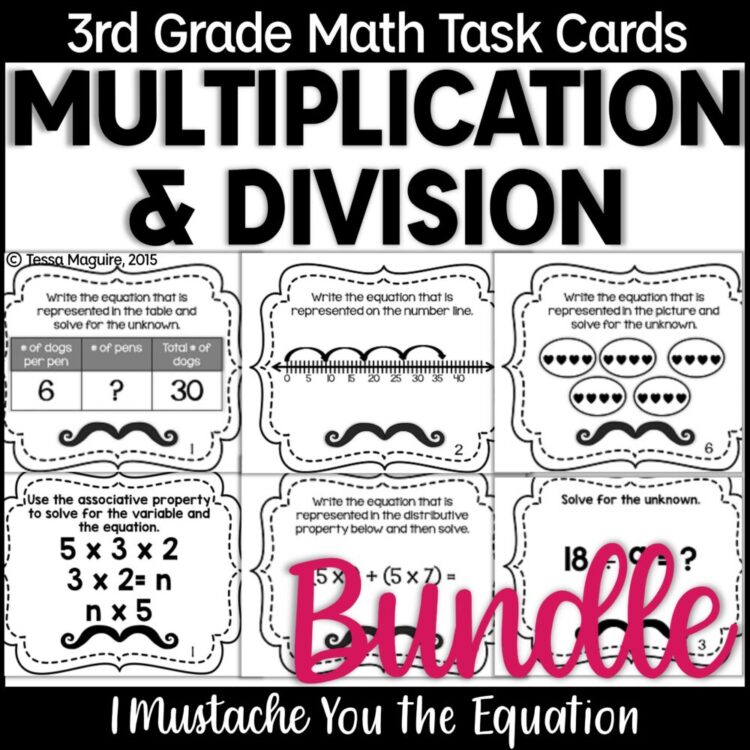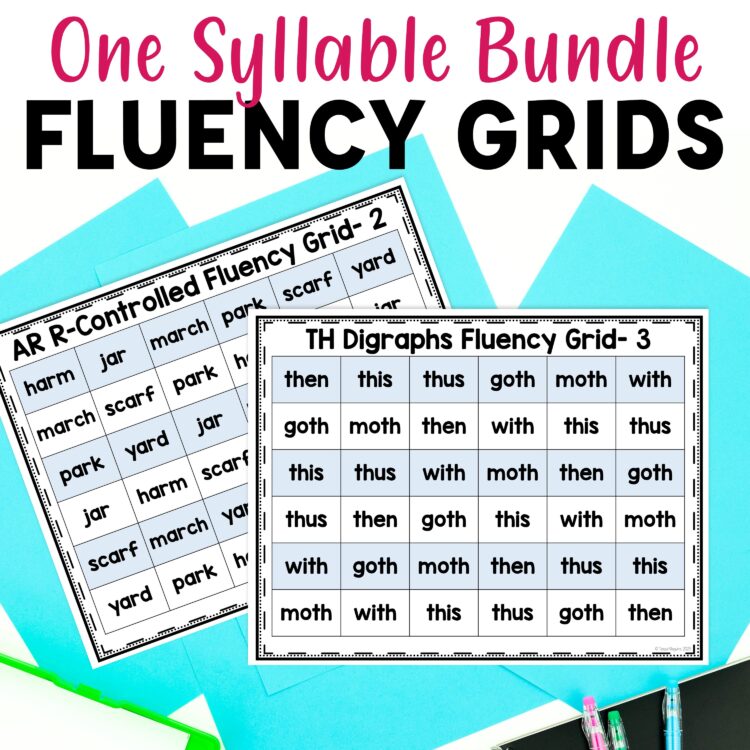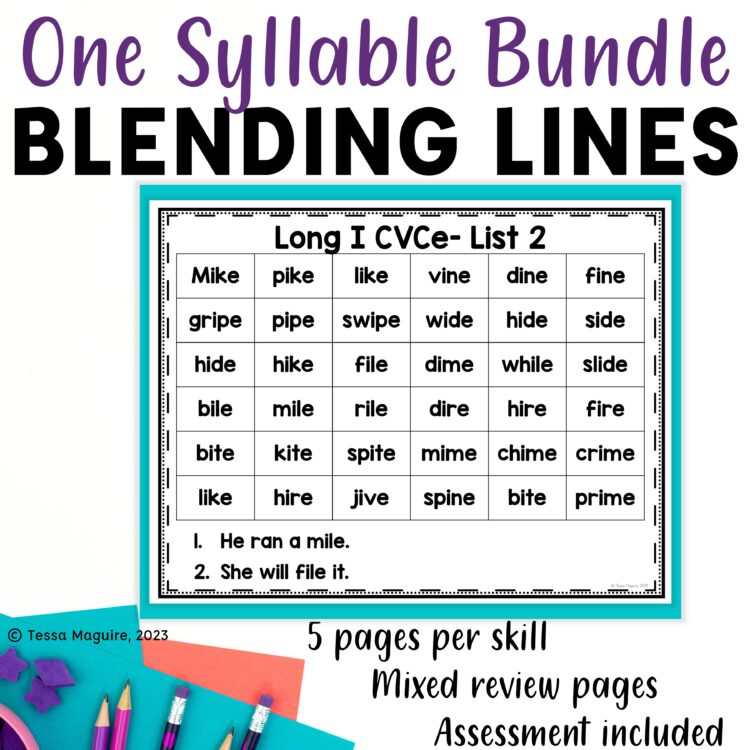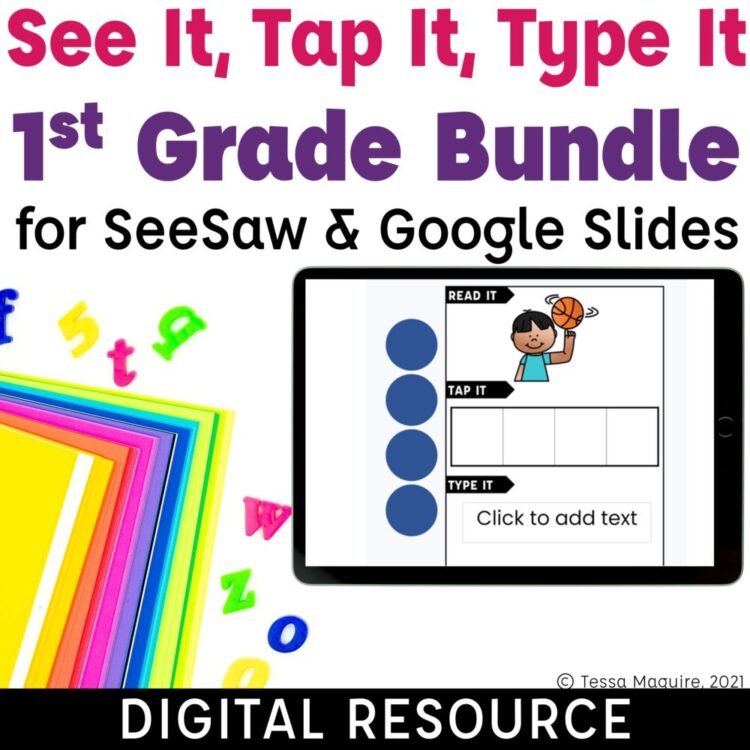© 2024 Tales from Outside the Classroom ● All Rights Reserved
Working with Division
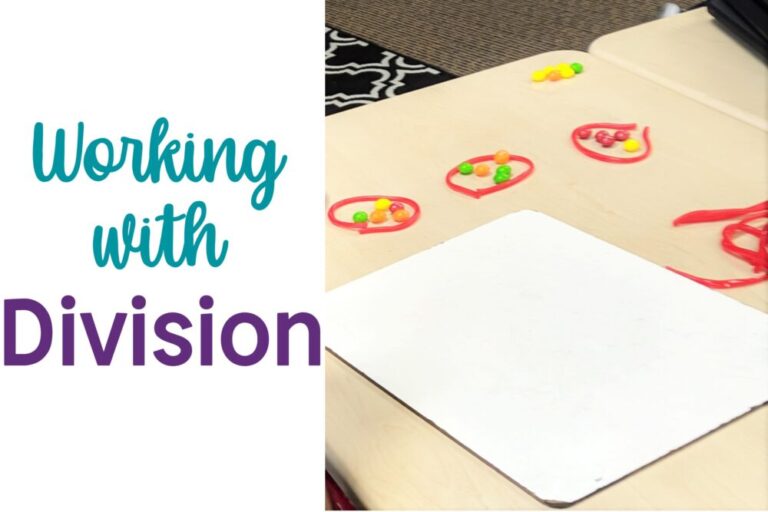
Some people, districts, textbooks (take your pick) teach multiplication and division together in one unit and at one time. I prefer to teach division a few weeks after multiplication; after students have had some time working with multiplication, exploring equal groups, and building a deep understanding of what multiplication means. You can also read more about how I introduce multiplication. For division, however, my go to is always, always food! Lesson engagement is at an all time high when candy is our math manipulative, and Skittles and Twizzlers Pull & Peel are the perfect division tool!
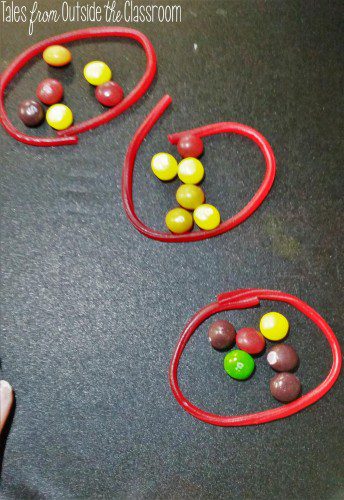
To start our work with division, I give each student a Twizzler’s Pull & Peel to start deconstructing. While students are working to separate the pieces, I walk around and distribute 24 Skittles to every student. Because students take time to separate the Pull & Peel, I have time to count out the Skittles.
I’m constantly looking for ways to keep students engaged in that first lesson introduction, and ways to keep them feeling successful using manipulatives during our hands-on exploration. To start, students make 3 groups by making 3 circles and count out 18 of their Skittles. This is an important part of our division work: that students understand that they know the amount of Skittles they’ll need to evenly divide. I reinforce that division is when we know the total number of objects (like the Skittles in their hand), and the number of groups the objects are going to be divided into (like the Twizzlers they have laid out). Students then divide their Skittles equally between the groups to find how many belong in each group. While students count it out, I reinforce that it’s easier to do this one by one, than by guessing and putting a random number in each group to start.
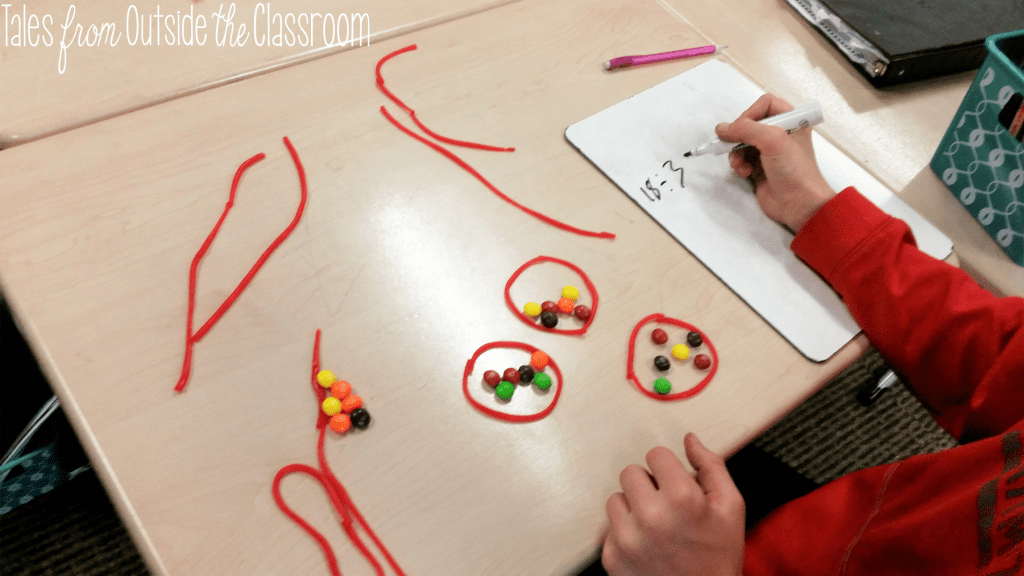
I write the equation on the board for students explaining the division vocabulary of dividend, divisor, and quotient.
After that first introduction, we continue to work through various division problems using our Skittles. I show students an equation and walk them through how many Skittles to place in their hand and how many groups to create based on the equation. I follow a gradual release model, asking students to guide our work as they feel more successful. We also explore the idea that division can also mean that we know the number in each group instead of the number of groups using our candy manipulatives.
Once students understand how to solve a division equation by representing it with manipulatives, I like to give them a bit of independent practice using concrete models.
I like to use my Multiplication & Division Pictures & Arrays Task Cards to practice writing division equations from picture representations. These are the same task cards that we used to practice multiplication. I love that I can use the task cards multiple times throughout the year, and I later use these same task cards to reinforce the concept of inverse relationships and fact families. I do not include what type of equations should be written in the directions, so that they can be used throughout your multiplication and division work Because there are two sets of task cards, and each set has 28 cards, we worked through 4 of the cards together as our quick review before I sent students to do a Solve the Room.
Understanding multiplication and division on number lines is such a hard concept for my kids, despite it being a great, effective strategy for them. Because of this, I am always sure to build in some intentional number line practice with my students. I used my Multiplication & Division on a Number Line Task Cards as our lesson and guided/independent practice. I think students can seem to grasp division on a number line a bit better than multiplication, from my experience, so I like walking students through this lesson. Once we’ve practiced this a bit, I’ve found that students have a more solid understanding of multiplication with number lines. Again, these are the same task cards we used in the multiplication unit so I loved not having to prep anything new.
After students have a solid grasp on division, we start exploring multiplication and division together. We spend all week talking about the vocabulary terms and concepts students need (total number of objects, number of groups, etc). I LOVE these Multiplication & Division Scenario Tables Task Cards. They were the first product I created in this series as I needed a way for my students to practice recognizing when something was multiplication and when something was division in real life situations. Often, when students see story problems, they trip up on the wordings. This allows us to practice the skill before we get to word problems. It’s so much less intimidating to students. We review multiplication and division together, and then I send students to do an independent practice with these task cards. Have I mentioned I LOVE task cards?
All of the task cards I’ve shown in this post, plus two more sets, are part of my Multiplication & Division Task Cards Bundle. I use these task cards in both my multiplication and division units. Then, because there’s two sets on each product, I use them throughout the year as a review. I love taking task cards from each set and putting them together to give my kids continued practice. So numbers 1-6 will be from pictures, 7-12 will be from number lines, etc. Or I have students do the even numbered problems as the represented multiplication equation and odd numbered problems as the division equation. There’s so many ways to reuse these throughout the year to keep students practicing and mastering multiplication and division and building their fact fluency.
As the years have gone on, I’ve also built a need for digital practice for multiplication and division. I’ve wanted students to be able to walk through concepts independently during their time away from our teacher group. My Introduction to Division Digital Resources have been such a great addition to our classroom work. Students build an understanding of division and division vocabulary, while walking through the independent lesson. Students continue their work throughout the week with additional digital task cards. I also have students complete an independent quiz using Google Forms as a review, and quick assessment before we get to our curriculum assessment. It’s a great way for students’ to monitor their own progress, and get a quick reteaching of missing concepts before the assessment. 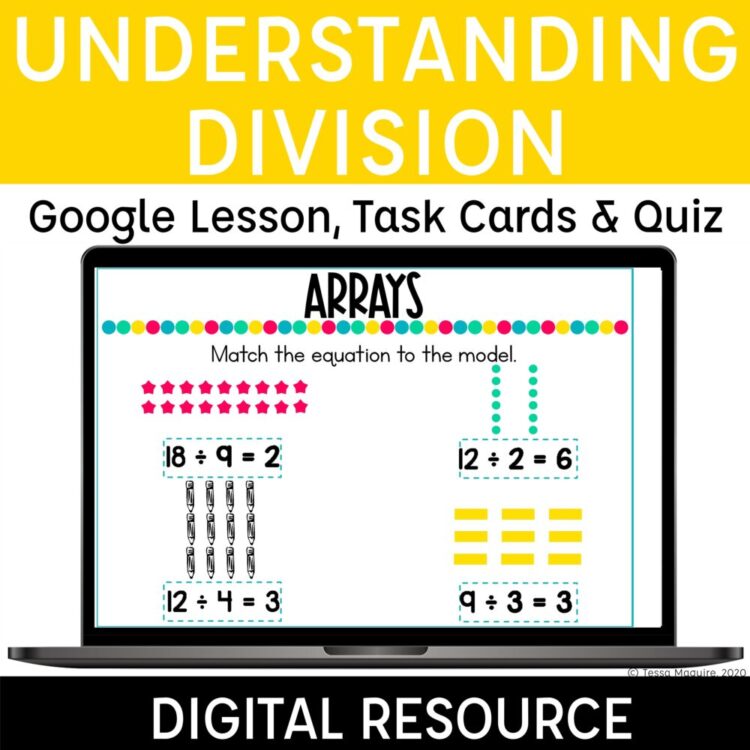
You might also enjoy reading more about how I teach math in third grade with my posts on An Introduction to Fractions and Introducing Multiplication.
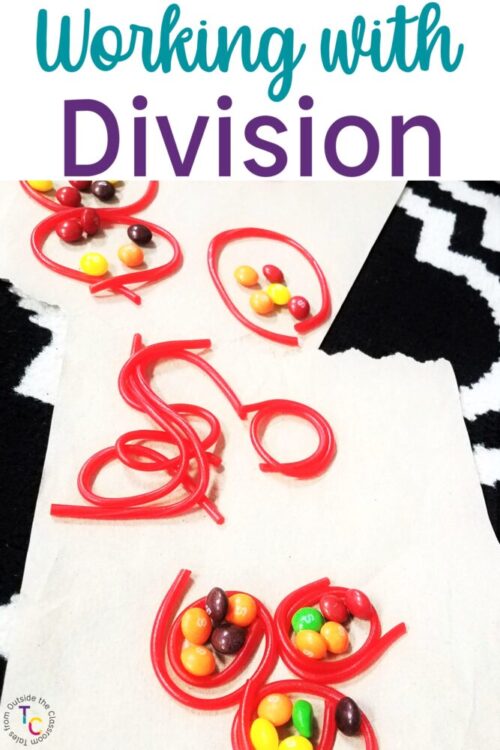
Newsletter Sign Up
Signup for my weekly-ish newsletter. I send out exclusive freebies, tips and strategies for your classroom, and more!
Please Read!
You have successfully joined our subscriber list. Please look in your e-mail and spam folder for Tales from Outside the Classroom. Often, the confirmation email gets overlooked and you're night signed up until you confirm!

Hi! I’m Tessa!
I’ve spent the last 15 years teaching in 1st, 2nd, and 3rd grades, and working beside elementary classrooms as an instructional coach and resource support. I’m passionate about math, literacy, and finding ways to make teachers’ days easier. I share from my experiences both in and out of the elementary classroom. Read more About Me.









